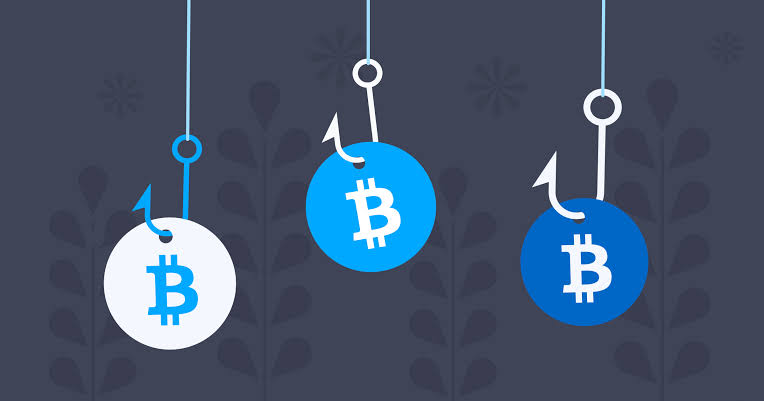Phishing is a kind of cyberattack that tricks users into disclosing personal information like passwords, usernames, and bitcoin private keys by using social engineering techniques. Cybercriminals typically use phone calls, text messages, or emails to plan phishing assaults. Hackers usually trick their victims into entering their private keys or crypto wallet credentials by using malicious links or phoney websites. The hacker can take cryptocurrency from the victim’s wallet or account once they have access to this information. It’s one of the most popular ways scammers and hackers get into people’s wallets or accounts to steal money or other valuables.
The Cryptocurrency Phishing History
In 2011, hackers launched the first phishing attacks in the cryptocurrency field, sending malicious emails to Bitcoin users that contained links to phoney websites that imitated legitimate cryptocurrency wallets and exchanges. Since then, phishing attempts targeting cryptocurrency exchanges, wallets, and even the laptops or accounts of individual investors have been widely documented. Cybercriminals began exploiting social media sites like Facebook and Twitter in 2017 to disseminate malicious links that led victims to phoney websites where they were requested to provide personal information, including their Bitcoin keys. By 2020, hackers had developed more cunning ways to exploit technology to trick unwary victims. Examples of these techniques include typosquatting, which is the registration of domains that are misspelt versions of well-known websites, and domain spoofing, which involves posing as a real website. Hackers’ attention has recently switched from private users’ assets to well-known cryptocurrency figures and exchanges.
Types of Phishing
Phishing is the term for when someone tries to deceive you into divulging private information, such as your password, username, or bank account. It may occur via phone call, text message, or email. The scammer may attempt to trick you into clicking on a link that leads to a phoney website. In order to access your wallet or account and remove money from it, they might also ask to see your private keys. Ten categories of phishing exist:
1) Spear phishing: a deliberate email attack when the sender poses as a person the recipient knows and trusts.
2.Whaling: An attempt to steal money or sensitive company information by going after senior leaders in an organisation
3.Vishing is a form of phishing effort in which attackers trick victims into divulging personal information, such as passwords and financial information, over the phone by using voice calls rather than emails.
4) SmiShing: An assault in which victims are tricked into believing that they are receiving SMS texts from reputable companies, including banks or online retailers, requesting their login credentials or financial information for use in fraudulent activity.
5) Clone Phishing: Cybercriminals take an already-existing, authentic email and insert malicious content into it before redistributing it to gullible recipients who might not be aware of the difference.
6) Tabnapping: This is where attackers take victims from a legitimate website to a malicious one.
7.Post-phishing: Cybercriminals utilise messages and posts on social networking platforms to deceive targets into opening harmful links or divulging personal data.
8) Search Engine Poisoning: Cybercriminals employ keyword optimisation strategies to sway search engine results, causing harmful links to show up among the most relevant results for a certain query.
9) Drive-by Phishing: Attackers can trick users into visiting malicious websites without their knowledge or consent by using malicious pop-ups and advertisements.
Preventative measures against phishing
1) Create secure passwords and, if feasible, employ two-factor authentication (2FA).
2) Avoid clicking on dubious emails or texts that appear to be phishing attempts.
3) Never give up your login information, even if it appears to be from a reputable company.
4) Watch out for fake websites that pose as trustworthy ones in an effort to obtain your personal data.
5) Verify the website’s address (starting with “https”) and look for a padlock icon in the address bar before entering any information.
6) Refrain from opening attachments or clicking links in emails from strangers or unidentified sources.
7.Update your firewall and anti-virus software on a regular basis to guard against malware attacks brought on by phishing scams.
8) Install browser extensions that can help detect harmful websites before they are accessed, such NoScript.
9) Exercise caution when disclosing the private key to your cryptocurrency wallet to strangers, and make sure the service or item you’re paying for with cryptocurrency is legitimate by doing your homework.
How to recognise a phisher
1. Slight alterations to the official website URL are frequently used by phishers. Misspellings or unusual characters in a domain address are usually signs that a phishing attempt is going to occur.
2. Since phishing emails are frequently sent in a rush, they frequently contain bad grammar and design flaws, which are simple to identify if you know what to look for.
3. Another way to spot a phisher is to look for content mismatch. When phishers attempt to pretend to be sending official-looking emails, they sometimes miss the finer details. Be aware that it can be written in a style or format that differs from what you are accustomed to from that specific organisation.
4.Phishers typically create a phoney website that closely mimics the actual one, down to the text, typefaces, logos, and colour schemes, in an attempt to fool users into believing it to be the real deal. You should be able to identify the phisher immediately if you are familiar with the company’s brand style.
In summary, phishing is a type of fraud that has been specifically directed towards bitcoin users in recent times. Phishing scams can be hard to spot because they frequently mimic trustworthy websites or services. Because of this, users should exercise caution while disclosing private or financial information online, especially when using cryptocurrency wallets or trading sites. By understanding the tricks used by phishers and taking the necessary precautions, you can ensure your crypto accounts remain sec
ure and protected.


